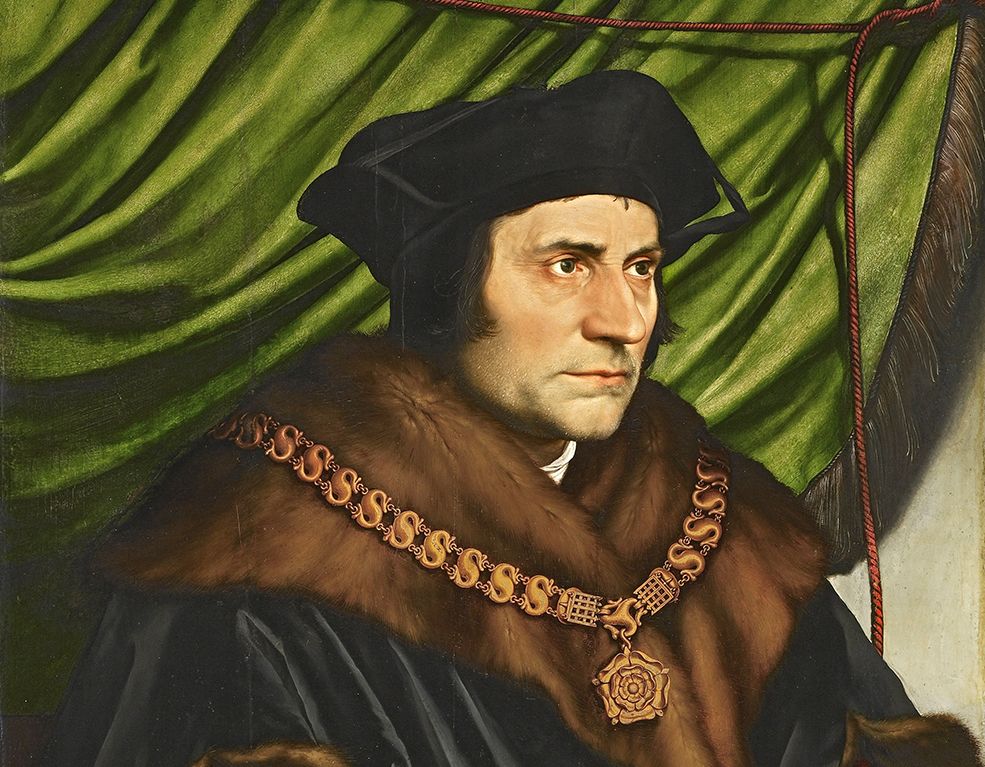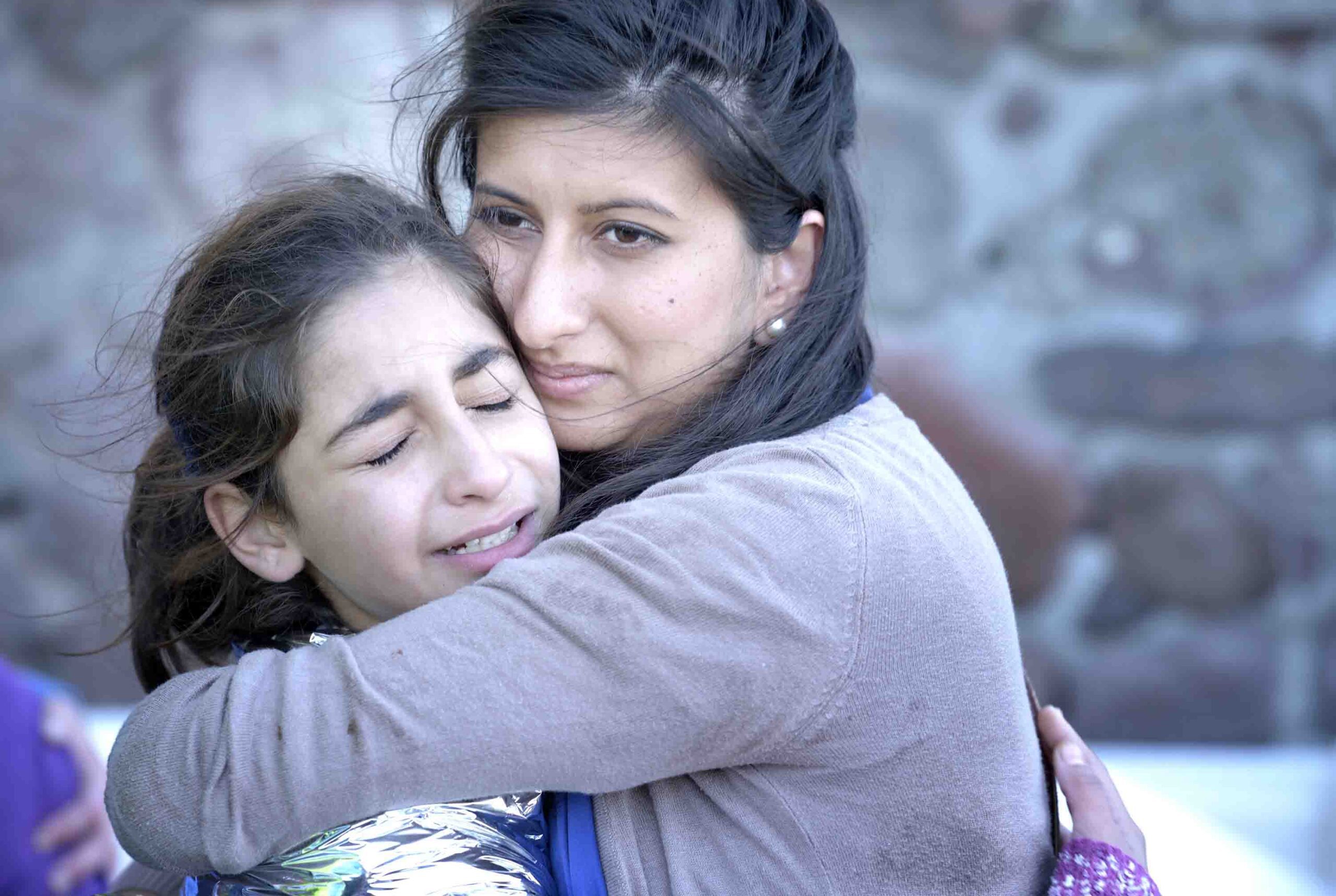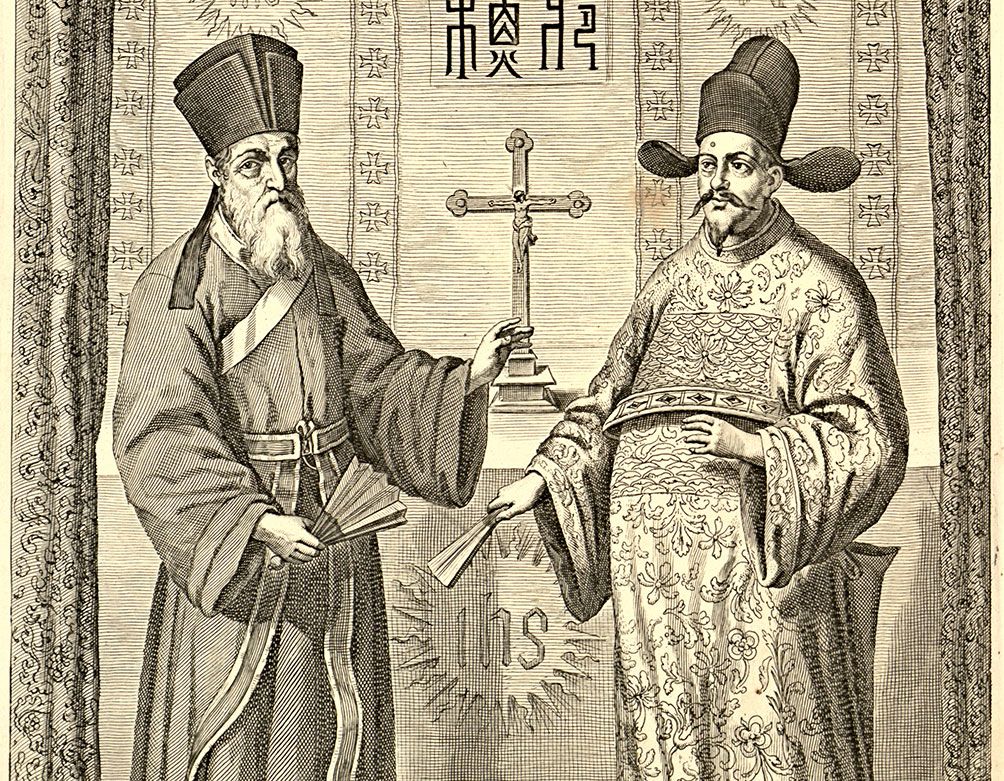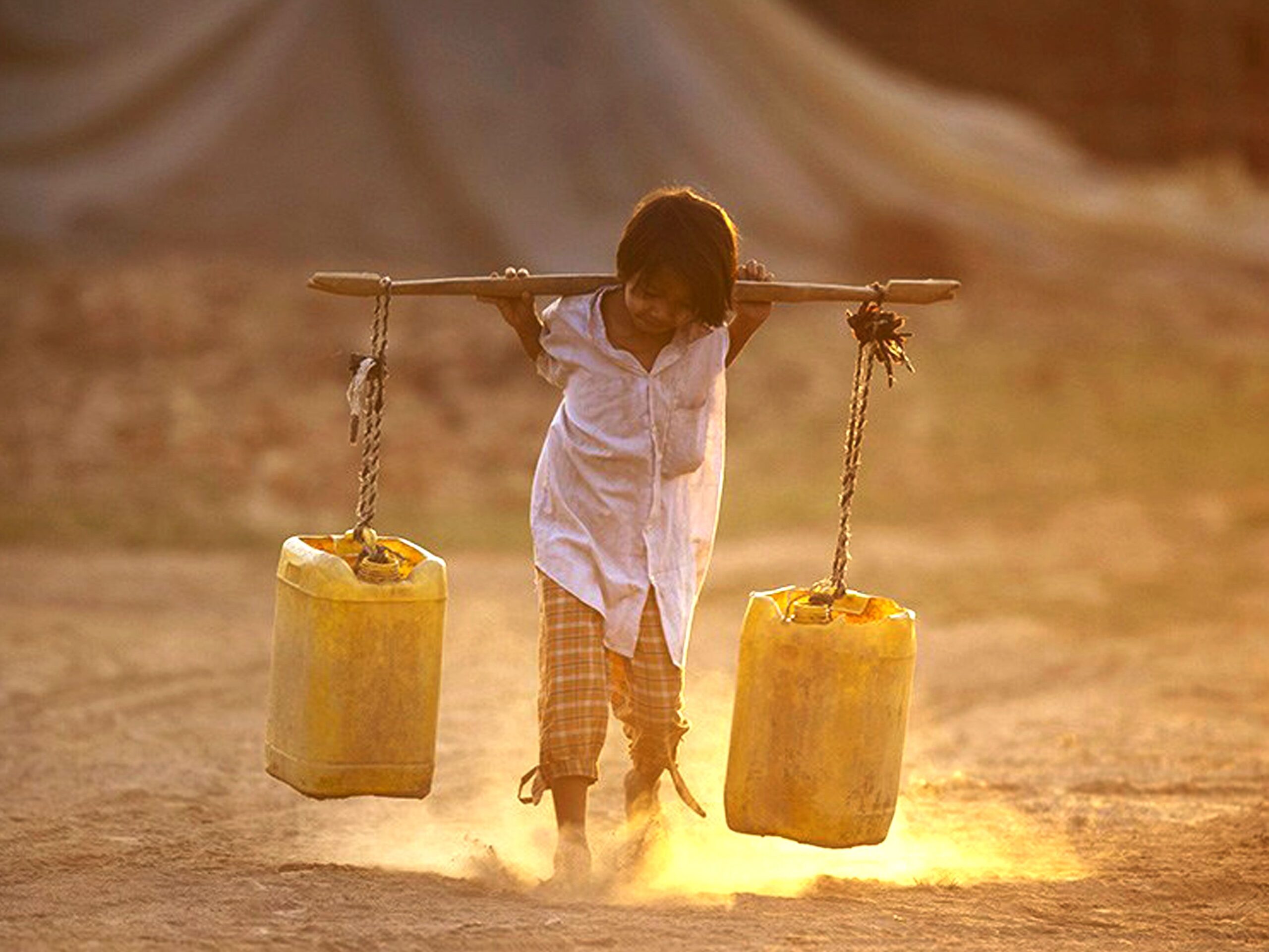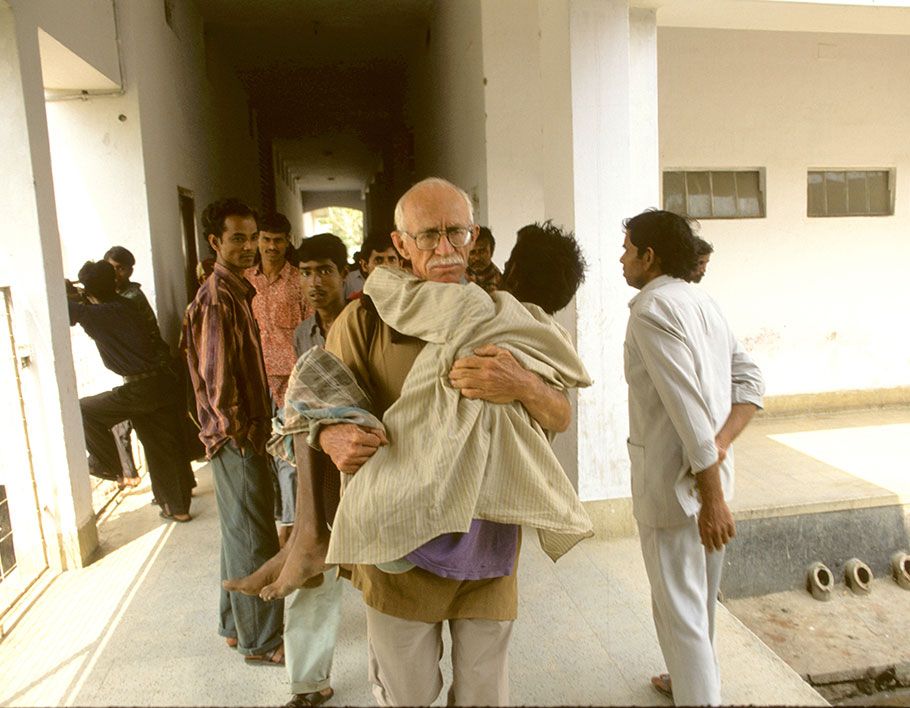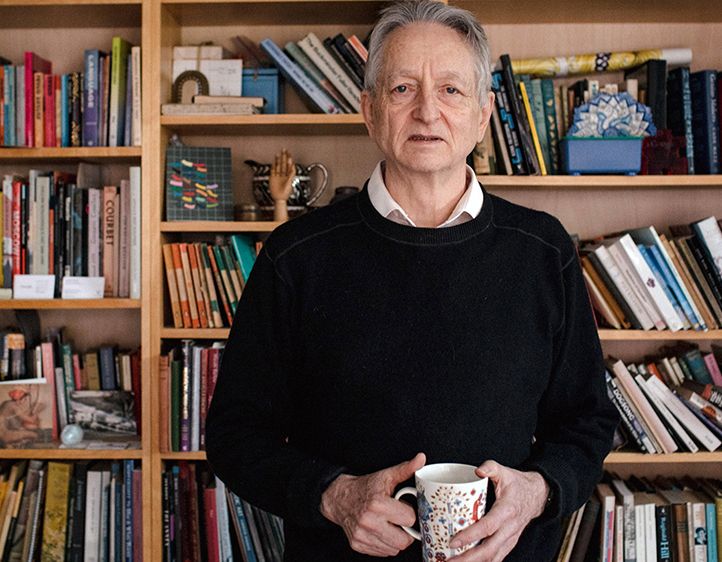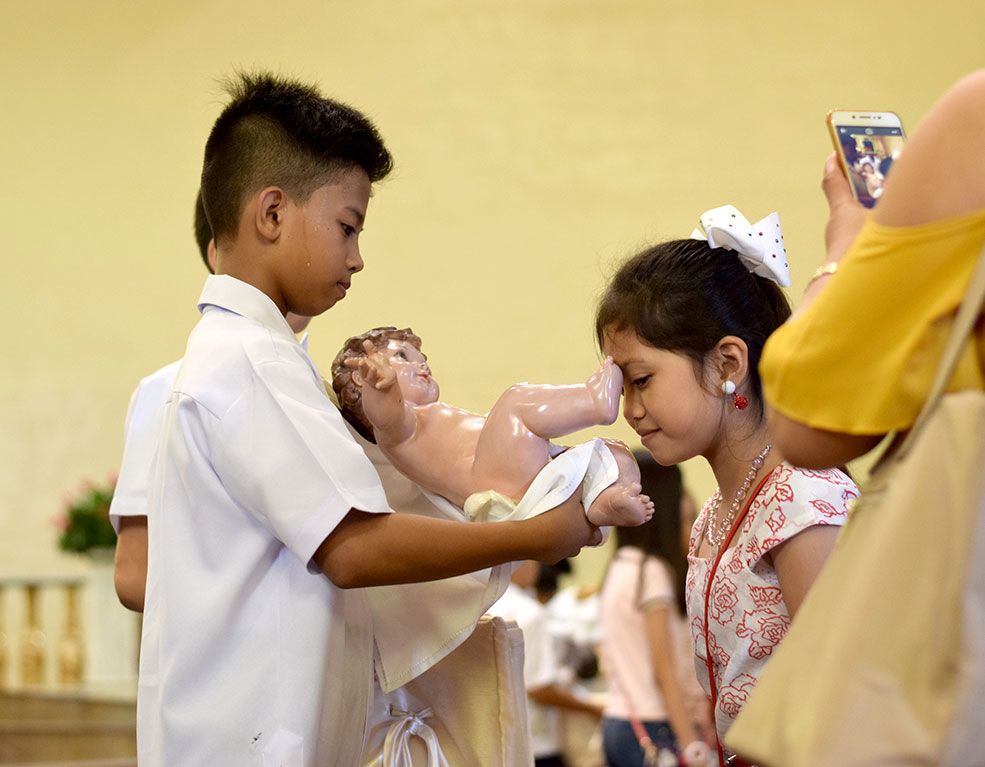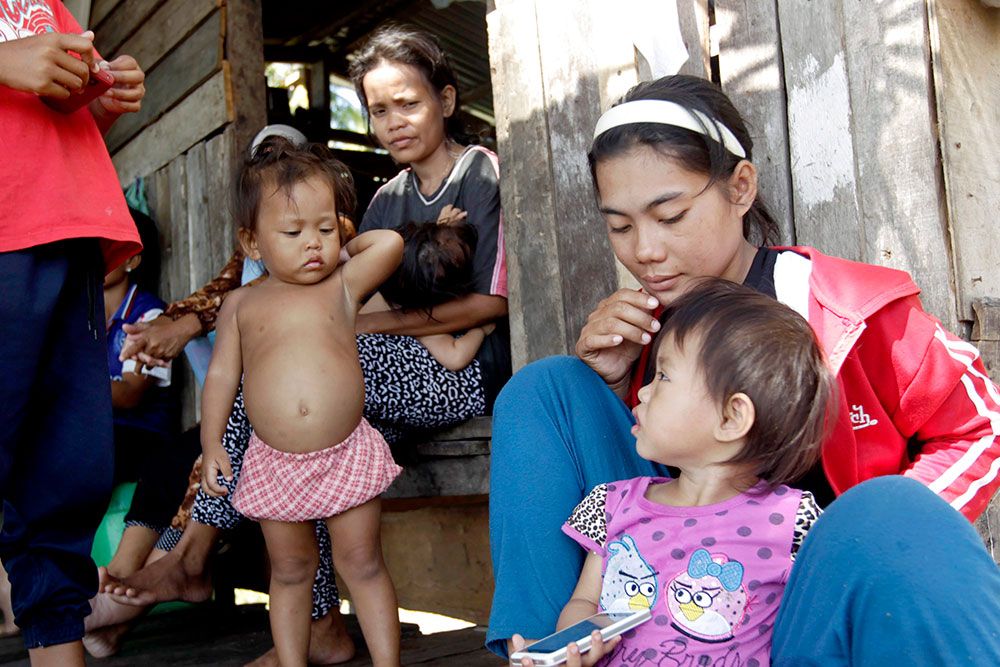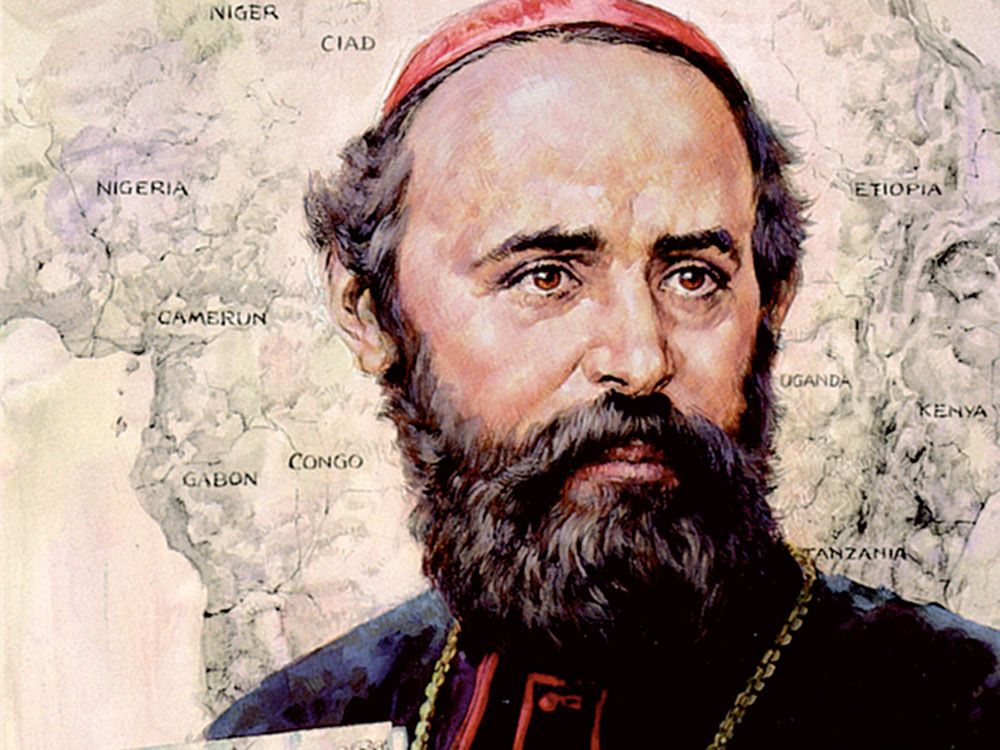Mission is, first of all, the mission of God, accomplished by the presence and activity of the Holy Spirit in the world. But how should such presence and activity be understood?
Should it be seen simply as the power at work in Jesus and His Church? In this case, we would speak of the Spirit of mission, who instructs and guides, enables and enlivens Christian missionary work in the world.
Or should we rather speak of the mission of the Spirit, in the sense that the Holy Spirit has Her own mission in the world which, though related to Jesus Christ and the Church, extends further and has its own specificity?
This question ushers the next: where is the Holy Spirit to be found: “in the human heart,” “in the Church” or “everywhere”?
The type of answer to these two questions will deeply affect both the understanding and practice of mission and the way today’s world is approached.
The main focus of the New Testament is on the event of Jesus Christ: on what Jesus’ disciples had “seen and touched” and experienced. What is underlined is how full of the Spirit of God Jesus was, and how the same Spirit had come to transform Jesus’ followers and to guide the journey of their community, both in its way of life and in its witness to Christ. Typical in this regard is the testimony of Luke, both in his Gospel and in the Acts of the Apostles. Luke’s work could easily be called the Book of the Holy Spirit. The other two synoptics – Matthew and Mark – make relatively few references to the action of the Spirit.
By the power of the Spirit, Jesus is formed in the womb of Mary (Lk. 1:35; cf. Mt. 1:18–20), is confirmed as Son of God (3:22; cf. Mt. 3:16–17; Mk. 1:8–10), is led into the wilderness where He confronts the counter–kingdom by undergoing temptation (4:1–2; cf. Mt. 4:1; Mk. 1;12), returns to Galilee (4:14) and is anointed to preach the Good News to the poor (4:18; cf. Mt. 12:18; Acts 10:38) and to free people from the power of evil (Lk. 11:20; cf. Mt. 12:28). Raised from the dead, Jesus commands His disciples to wait for the promised “power from on high” through the coming of the Holy Spirit so as to be His witnesses in the whole world (Lk. 24:49; Acts 1:8). At the Jewish feast of Pentecost, that promise is fulfilled: the Spirit comes on them with the force of wind and fire and fills them, as if with the inebriating power of wine, propelling them to mission (Acts 2:1–4, 15). A parallel is established between the anointing of Jesus by the Spirit at the Jordan and the coming of the Spirit on the disciples at Pentecost, with the death and resurrection of Jesus constituting the decisive turning point: being exalted at the right hand of God, Jesus Himself has become a Spirit–Giver (Acts 2:33). The prophetic messianic Spirit who had empowered Jesus for mission is now passed on to His disciples and imprints upon them the character of Jesus by transforming them into charismatically gifted prophets (people “full of the Spirit”– 4:8; 6:3–5; 7:55; 8:29, 39; 11:24; 13:9) who are “turning the world upside down” (17:6). Throughout the Acts’ account, the Spirit guides Jesus’ disciples in their missionary activities (6:10; 8:29; 10:19; 11:12; 13:2–4; 16:6–7; 19:21; 20:22) and legitimizes their testimony. The Spirit leads them through unexpected paths and through dramatic turnings as when She opens the way to the Gentiles (Chs. 10–11, 15), through which the disciples’ injunction to witness Jesus “to the ends of the earth” becomes effective. And a process of universal reconciliation among peoples is set in motion, hinted at on the day of Pentecost.
A source of regeneration
The other gospel in which the Spirit plays a major role is the Gospel of John. For Luke and John, Jesus is the Bearer of the Spirit who confirms Him as the Son of God (Jn. 1:33–34). Through Jesus, the Spirit is communicated also to His disciples. One difference between John and Luke is that John is more concerned with the Spirit’s presence as a source of regeneration than with the Spirit’s activity. Thus, Nicodemus needs to be born again of the Spirit in order to enter the kingdom of God (3:5). The Spirit is like living water that flows out of the believer’s heart (7:37–39). Taking the place of Jesus when He will no longer be with them, the Spirit will abide with and in the disciples, as their “Paraclete” (Comforter, Counsellor or Advocate), reminding them of all that Jesus had taught and leading them into all truth (Chs. 14–16). The giving of the Spirit to the disciples is contingent to Jesus’ glorification (7:39) which, in John’s perspective, includes both death on the cross and resurrection as the two sides of one great event; and John places it at the very heart of the Easter event. Jesus on the cross gives up His spirit as a token of the outpouring of the Holy Spirit (19:30). Then, once resurrected, Jesus, with a gesture that recalls God’s creative act (Gn. 2:7), breathes on the disciples, thus sharing with them the new life of the resurrection and its peace, and sends them to a mission of reconciliation (Jn. 20:22).
The extensive theology of the Spirit that the apostle Paul develops in his letters is especially grounded on the event of Easter. For Paul, the gift of the Spirit is an integral part of Jesus’ death and resurrection – the great eschatological turning point. Raised by the Spirit from the dead and proclaimed Son of God in all His power (Rom. 1:3–4; 8:11), Jesus becomes Himself a “Life–Giving Spirit”: the Spirit is so much His own that Christ, too, can be seen as Spirit (1 Cor. 15:45; 2 Cor. 3:17), in relation both to His new mode of existence and to His new way of acting towards the community and the individual. Not only does the Spirit enable the confession of faith that “Jesus is Lord” (1 Cor. 12:3), but She also allows a very Christian eschatological existence: the Spirit is given as foretaste and a pledge of what is to come (2 Cor. 1:22; Rom. 8:23; Eph. 1:13–14). The phrases “in Christ” and “in the Spirit” are, for Paul, flipside of each other, indicative of an experience of God’s indwelling (Rom. 8:9–11). Without the Spirit, not only would the community lack its missionary commission but, even more, there would be no community at all. The Spirit structures the Church from within with a plurality of gifts: which brings in an experience of God’s marvel and builds the Church as a network of mutual service, according to an economy of gift and gratuity, and equips her for a ministry of reconciliation in the world (1 Cor. 12:4–11; Rom. 12:6–8; Gal. 5:22). In a perspective of mission, it is significant that neither the gifts of the Spirit that Paul lists nor the fruits of the Spirit, such as those mentioned in Galatians 5, are the monopoly of the Christian community (Rom. 2:7–8, 10–11).
Spirit Christology
The various writings of the New Testament witness, then, how the first believers experienced the event of Jesus Christ as an explosion of God’s Spirit, shaking and reshaping the world. Such was the impact of that experience of ‘newness’ that it could explain why the New Testament remains rather silent about the work of the Spirit in creation and humanity.
In a similar way, perhaps, we could explain the tendency of Western Christian tradition to interpret the presence and activity of the Spirit in the world as starting from the life and ministry of Jesus Christ, if not from Pentecost itself. Consequently, the Spirit is seen as a presence within the Church as She meets the world, rather than as an external force that comes to meet and challenge the Church herself.
Such an interpretation implies a twofold risk. First, that the Spirit, in Her activity in the world, tends to be subordinate and functional to the work of Christ. Secondly, that the space is open for a domestication of the Spirit in the Church, with an overlapping in mission between the action of the Spirit and that of the Church. Even when, as in recent documents of the Catholic Church, manifestations of the Spirit outside the Church are acknowledged, they are seen not only as related but actually as final to the Church which, in this way, remain at the centre of the Spirit’s work in the world. Thus, the Spirit is still acknowledged as the protagonist of mission, yet only as the Spirit of mission, empowering Jesus first and then the Church for her mission.
Would it not be possible, however, to read the testimony of the New Testament in another way and see, in the incarnate life and death of Jesus Christ, a key and defining expression of the ongoing activity of the Spirit of God, in which the Church comes to participate, more as a Church being given to the Spirit than as a Church to whom the Spirit is given?
This other reading would account better for the active role that the Gospels ascribe to the Holy Spirit, in the making of Jesus Himself and His mission as well as for the sovereignty with which the Spirit leads the way in the mission of the Church. And, indeed, recent “theological reflection” has moved towards a so–called “Spirit Christology” that focuses, on one hand, on the experience of Jesus as anointed by the Spirit and, on the other, stresses more and more the ‘pneumatic’ dimension of the Church, how the Holy Spirit is foundational of the Church’s existence and shapes her as a charismatic, open and extrovert community.
God’s empowering presence
It is significant that Luke links the activity of the Holy Spirit with that of God’s Spirit in the Old Testament: the Spirit who is active at the birth of Jesus and is later poured on the disciples at Pentecost is the prophetic Spirit already known in the Old Testament. An active overarching presence of the Spirit in the world was envisioned way back before the historical event of Jesus.
Actually, the New Testament shares with the Old Testament a whole series of literary figurations of the Spirit, taken from nature – dove, water, light, breath, fire and wind, which connect the presence and activity of the Spirit to creation itself and depict the Spirit as ‘life–form’ – God’s empowering presence in creation.
This broader scope of the Spirit’s work has been proper to the Eastern Christian tradition, in which the relationship of the Spirit and mission does not begin at Pentecost with the activity of the Church. According to the Eastern Churches, the role of the Spirit in mission cannot be described simply in terms of ‘Spirit of mission,’ but rather of ‘mission of the Spirit’ with creative, material and cosmic dimensions. Moving from the view that God acts in the world as Trinity and the Spirit is one dimension of God’s activity, Eastern Churches see the Spirit as “Cocreator” and creation as being full of Her “energies”: creation participates in the divine energies of the Holy Spirit and develops as an ongoing process towards ‘divinization’ (theosis).
Such a perception of the Spirit, as ‘energy’ in the creative process, is today appreciated and elaborated anew in ecumenical dialogue and, more specifically, in the theological reflection on creation as developed in conversation with modern science and post–modern cosmologies. As John V. Taylor says: “There can be no recovery of vital belief in the Holy Spirit and, consequently, no true theology of mission, unless we are prepared to have dealings with the great deeps of an elemental energy.” Creation, not simply as a past act but as an evolving process, is seen as Spirit–filled and Spirit–driven.
The Spirit dwells in the heart of the whole of cosmic and human history and “energizes and animates all the fields upon which creation thrives and functions” (Diarmuid O’Murchu). With Her alluring and mother–like power, the Spirit nurtures the blossoming and flourishing of an essentially open-ended universe – or better, ‘multiverse.’ She labors “to create, sustain, and renew humans and other kinds in solidarity with one another” (Mark I. Wallace), by weaving a web of life and relationships, in a kind of relational cosmic dance: “The communion of creation, in which all created things exist with one another, for one another and in one another, is also the fellowship of the Holy Spirit,” writes the German theologian, Jürgen Moltmann. Within the fabric of the universe, the Spirit operates to consistently affirm life over and against alienating and destructive forces and mechanisms, but also from within destruction and death itself.
“The Spirit is all about flow” (Catherine Keller): blowing freely where She wants, before order and security, the Spirit is movement towards the unforeseeable future; gentle breeze but at times even raging storm, a “power of revolutionary transgression” (Mark I. Wallace) that disrupts boundaries, structures and systems that prevent reciprocity and mutual belonging at all levels of life – cultural, planetary and cosmic.
A dynamic generosity
A Spirit theology of creation is thus developed linking together the Pentecostal Spirit (Pneuma) who bursts from ‘without’/outside the world and the “breath of life” (ruach) of Genesis (Gen. 1:2; cf. Job. 34:14–15; Ps. 104:29–30) that acts from ‘within.’ Not only is the whole course of a distinct mission of the Spirit throughout time and history highlighted, but how rich that mission is in paradoxes, tensions and surprises.
First of all, there is the paradox of a mission that moves both from “within” and from “without” the world, so that the Spirit is experienced as an inspiration before manifesting Herself in revelation.
The work of the Spirit in the world is an event, at the same time, transcendent and immanent. The theologian Stephen Bevans would speak of “transcending immanence.” The Spirit, who, at Pentecost, opens for the Church the way to mission, is new and old. It is, in fact, the Spirit who encounters people, first and foremost, in the creative energy of universal life and the exchanges that it enables. The experience and memories of that encounter are inscribed in the time–honored creation stories and cultural and religious traditions of so many peoples. There is no uncharted territory for the Spirit of God. Revelation comes in as a new and intense light for discovering and discerning a presence that is already there and a story that is already unfolding, and breaks open a future of new possibilities beyond expectation.
The Spirit’s earth–based understanding that such a theology of creation comes to highlight is also paradoxical. It is the view of the Spirit as “enfleshed and embodied” (Mark I. Wallace) in the natural process of an evolutionary creation: “beginning with the Spirit moving over the waters at creation (Gen. 1:2), adds a material…dimension to the Spirit’s work” (Kirsteen Kim). Long–standing dualistic divides between ‘supernatural’ and ‘natural’, ‘spiritual’ and ‘material,’ ‘sacred’ and ‘secular’, the ‘all–powerful God’ and ‘powerless human being’ start to fall apart, in the light of a Divine Mystery that permeates and animates everything that exists. The Spirit “is, in some way, one with our own being and becoming,” says Miriam Therese Winter. That does not mean that the Spirit is just reduced to a non–personal, benevolent cosmic force. It rather points to a ‘self–emptying’ (kenosis) of the Spirit of God, whose divine glory becomes the flow of life that it engenders, the new possibilities it liberates and the creative interactions it facilitates. The Spirit’s divine power reveals itself in the form of ‘self–gift’ that introduces into the texture of creation a dynamic ‘generosity’: an Eros–like captivating force that awakens and engages processes of creativity and drives together the different parts of the universe as well as a spiritual instinct of altruism in human consciousness that contrasts opposite instincts of domination and violence.
Pilgrims and sojourners
If the action of the Spirit is such a power for conviviality among all beings, then the hegemony itself of the human being in creation is put into question. The retrieval of the Spirit’s immanence in creation means that human beings and the rest of creation are all part of the same web of life (cosmic ecosystem), marked by interdependence and mutuality. An ‘anthropological de–centering’ in the way creation is imaged and the work of the Spirit in the world is understood, is unavoidable, as it is a redefinition of what it means to be human. Humans are challenged to value this kinship with all creation and consider themselves “pilgrims and sojourners rather than wardens or stewards” (Mark I. Wallace) in a world that, as a whole, is the Spirit’s sacred dwelling place. Sally McFague goes so far as to speak of the natural world as “God’s body.” Further on, it is the very sense of humanity to be reinterpreted in the direction of belonging, relationality, inclusivity and compassion. A Spirit theology of creation informs an ecological theology not only on a just relationship with the environment, but also as a matrix for healing and transforming relationships at all levels in accordance with the Spirit of conviviality, beyond dominion and violence of any kind. This is so true that feminist theology, which labors for the liberation of women, has also largely contributed to ecological theology, highlighting a connection between women’s suffering and the pain of Mother–Earth.
As regards the presence and activity of the Spirit in human history, this dimension of liberation from injustice and oppression and of shared conviviality has been explored by a theological reflection that has made the biblical witness of the prophets and the experience of the poor interact with one another. In addition to the feminist movement, this reflection has been carried out by various versions of liberation theology throughout the continents, by Dalit and Minjung theology in India and Korea, respectively, and by political theologies. Thus, the frequently anonymous presence of the Spirit in the historical actions of the poor themselves, in their search for liberation, has been brought to light. Two main aspects have been pointed out: “There is no spiritual presence where there is no humanity and justice” (Paul Tillich), and “the Spirit does not speak about the oppressed so much as the Spirit speaks through the oppressed” (Richard Tholin).
More and more, it has become clear how the Spirit moves freely throughout human history and has made Her presence felt in the various historical events that have left their mark on humanity. And how that presence extends to cultures and peoples formerly thought to be pagans. In particular, there has been a growing awareness of the working of the Spirit not only in the individual members of the many religions in the world and throughout history, but also in their religious traditions.
Giver of life
Rooted in the event of creation itself, the presence and activity of the Holy Spirit crosses the whole history of the world, as a divine communication from within the depths of creation. Beyond the ‘Spirit of mission’ who accompanies Jesus in His mission and sustains the Church, we do have to speak of a mission of the Spirit that goes back before and extends during and after the mission of the historical Jesus.
The Spirit is “Giver of Life,” and the drive of the Spirit’s mission is to communicate life in fullness, from the primordial creative act to its eschatological accomplishment. “Poured out on all flesh” – a universe of life: participation in the Trinitarian divine life and a shared life among all, at all levels, through a process of transformation, renewal, healing and reconciliation, is what the mission of the Spirit is ultimately about. Within the present world, the life–giving energy of the Spirit is the power of the age to come; the power of eschatological newness and, conversely, God’s power to disrupt structures and systems that victimize and bring death. The Spirit is the Advocate of the marginalized and oppressed.
The messianic story of Jesus Himself and the event of Pentecost are also part of this larger story of the Spirit: “God first sent the Spirit, and then sent the Son in the context of the Spirit’s mission to bring to completion – perhaps not precisely the work of the Spirit, but the work of God conceived as one work to be executed in two steps of the twofold mission: first of the Spirit and then of the Son” (Frederick Crowe). Already, St. Irenaeus had spoken of the Son and the Spirit as the “two hands of God” in the work of salvation.
According to the Trinitarian dynamics, the relation between the Spirit and the Son is one of reciprocity and mutuality: properly speaking, not ‘two missions’ but a ‘dual mission’ through which the event of the self–communication of the Triune God to the world happens; that self–communication from which the world gets its origin and on which it thrives till all things are made new (Rev. 21:5) and “God may be all in all” (1 Cor. 15:28).
A great feast
In this perspective, the event of Jesus Christ, as the Incarnate Son/Word made flesh, is, at the same time, a unique manifestation of the Spirit’s universal action in the world, “the face of the Spirit” to use an expression of Stephen Bevans. The relationship, however, between the event of Jesus and the other manifestations of the Spirit’s agency in mission is not solely one–way; a certain reciprocity also exists.
On one hand, in Jesus, the divine mystery itself is given a historical concreteness (“what we have heard…seen with our eyes…and touched with our hands, concerning the word of life,” 1 Jn. 1:1). This makes Jesus and His story the criterion for identifying the concrete content of the Spirit’s mission and for discerning its actual presence in the plurality of events and spirits of the world and human history.
On the other hand, by inscribing the mystery into a historical event, particularity the incarnation, both reveal and hide it, even its outreaching capacity. Further limits come from the transmission of the Christ event, where the witness of the Scriptures, on the one hand, does not exhaust the richness of the Christ event and, on the other, is always received and interpreted from within a given historical and cultural location. It is here that the encounter with other historical expressions of the Spirit’s presence in the world comes as an enrichment of the Christ event, in that it deepens its meaning and discloses its still ‘unedited’ potentialities. In such an encounter, the Spirit is once again at work, leading to the whole truth.
Though being intimately related to the Christ event, and even if not always so transparent or free from ambiguities, these other expressions of the Spirit’s work are, as such, true moments of authentic encounter with the divine mystery.
Through Her universal presence and activity, the Holy Spirit, as a Divine Artist, embroiders the tapestry of God’s Kingdom. On that tapestry the features of the Crucified and Risen Jesus are being reflected. Christ’s many faces, according to the different ways the Spirit portrays Him, are a great array of colors.
(Author’s note: “Of course, the Divine Spirit is neither masculine nor feminine. In this contribution, however, because of the particular role the Spirit plays in nurturing life, the feminine gender is being used.”)






